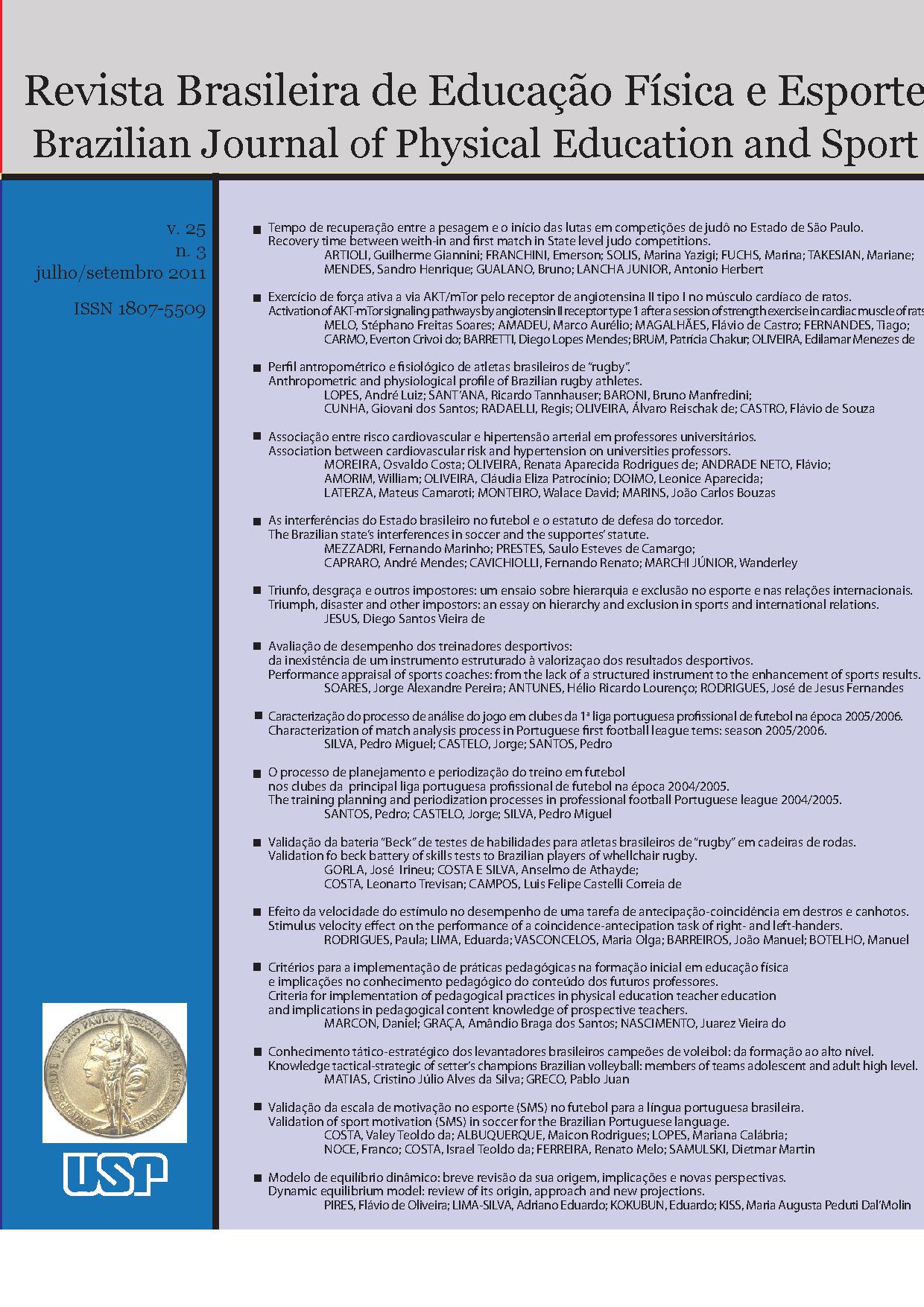Dynamic equilibrium model: review of its origin, approach and new projections
DOI:
https://doi.org/10.1590/S1807-55092011000300016Keywords:
Maximal lactate steady state, Central governor model, Cardiovascular/anaerobic/catastrophic modelAbstract
The Dynamic Equilibrium Model (DEM) assumes the presence of a maximal exercise intensity at which a complete physiological steady state occurs, allowing the exercise to be prolonged. Up to this limit of intensity, the exercise would be limited by muscle glycogen storages, but above this the metabolic accumulation would lead to a bodily systems failure that would match with maximal values in physiological variables. However, the DEM does not agree with experimental results, because studies have failed to demonstrate a full physiological steady state during exercise at or below this limit of intensity. Additionally, evidences have shown that exercise terminates without complete muscle glycogen depletion within this intensity range. Initially, the disagreement between theory and experimental data could be due partially to a methodological aspect: the absence of exercise termination determined by the incapacity for maintaining a required power output. Such absence of an exhaustion point as criteria to establish the exercise termination could have caused a temporal artifact, not allowing that each temporal measure has indicated the same phase of physiological adjustment to the effort. Yet, recent findings of our group have suggested another perspective to interpret the experimental data; the existence of physiological steady state regulated by the central and peripheral nervous system within a broad exercise intensity range.Downloads
Download data is not yet available.
Downloads
Published
2011-09-01
Issue
Section
Ensaio
License
Todo o conteúdo da revista, exceto onde está identificado, está licenciado sob uma Licença Creative Commons (CC-BY)
How to Cite
Pires, F. de O., Lima-Silva, A. E., Kokubun, E., & Kiss, M. A. P. D. (2011). Dynamic equilibrium model: review of its origin, approach and new projections . Brazilian Journal of Physical Education and Sport, 25(3), 547-555. https://doi.org/10.1590/S1807-55092011000300016


